
THE RISE OF THE CHICAGO POLICE DEPARTMENT
THE WORKING CLASS IN AMERICAN HISTORY
Editorial Advisors
James R. Barrett, Julie Greene, William P. Jones, Alice Kessler-Harris, and Nelson Lichtenstein
The Rise of the Chicago Police Department
Class and Conflict, 18501894
SAM MITRANI
UNIVERSITY OF ILLINOIS PRESS
URBANA, CHICAGO, AND SPRINGFIELD
2013 by the Board of Trustees
of the University of Illinois
All rights reserved
Manufactured in the United States of America
C 5 4 3 2 1
 This book is printed on acid-free paper.
This book is printed on acid-free paper.
Library of Congress Cataloging-in-Publication Data
Mitrani, Sam.
The rise of the Chicago Police Department : class and conflict, 18501894 / Sam Mitrani.
pages cm. (Working class in American history)
Summary: In this book, Sam Mitrani cogently examines the making of the police department in Chicago, which by the late 1800s had grown into the most violent, turbulent city in America. Chicago was roiling with political and economic conflict, much of it rooted in class tensions, and the citys lawmakers and business elite fostered the growth of a professional municipal police force to protect capitalism, its assets, and their own positions in society. Together with city policymakers, the business elite united behind an ideology of order that would simultaneously justify the police forces existence and dictate its functions. Tracing the Chicago police departments growth through events such as the 1855 Lager Beer riot, the Civil War, the May Day strikes, the 1877 railroad workers strike and riot, and the Haymarket violence in 1886, Mitrani demonstrates that this ideology of order both succeeded and failed in its aims. Recasting late nineteenth-century Chicago in terms of the struggle over order, this insightful history uncovers the modern police departments role in reconciling democracy with industrial capitalism. Provided by publisher.
Includes bibliographical references and index.
ISBN 978-0-252-03806-8 (hardback)
ISBN 978-0-252-09533-7 (ebook)
1. Chicago (Ill.). Police DepartmentHistory. 2. PoliceIllinoisChicagoHistory. 3. Law enforcementIllinoisChicago. I. Title.
HV8148.C4M58 2013
63.209773'1109034dc23 2013020895
To All My Parents and Grandparents
CONTENTS
ACKNOWLEDGMENTS
This book owes an enormous intellectual debt to those historians who have already written the history of Chicago and its class relations, especially Richard Schneirov and John Jentz. Their excellent work informed the questions and underlying analysis of this book.
I would also like to especially thank Richard John. He provided firm guidance when necessary, and let me find my own way when that was more useful. Leon Fink, Michael Perman, Perry Duis, and Amy Dru Stanley gave necessary insights and crucial support.
A number of colleagues also provided important help along the way, especially John Flores, Joey Lipari, Anne Parsons, John Rosen, Mohan Sing, and Benn Williams.
I also received excellent and timely advice and criticism from Laurie Matheson, James Barrett, and my anonymous readers through the University of Illinois Press. I would like to thank the rest of the University of Illinois Press staff, and also Deborah Oliver for her careful reading of the manuscript.
Finally, this project would not have been possible without the help and support of my wonderful family, especially Karen Swan and Yeti Mitrani, who read the manuscript at critical stages, and Juanita Sugar Del Toro and Peanut Del Toro, who loved, supported, and advised me throughout.
INTRODUCTION
On August 26, 1765, a crowd holding him responsible for the Stamp Act attacked the Boston home of Massachusetts lieutenant governor and chief justice Thomas Hutchinson. The attackers spent the entire night sacking Hutchinsons mansion, carrying off his valuables, and using axes to dismantle the wooden portions of the building. Hutchinson and his family fled and survived without bodily harm, but his home was largely destroyed. As the rioters worked throughout the night dismantling Hutchinsons house and looting his possessions, no forces of order arrived to eject them or to protect the property of this powerful and wealthy man. Hutchinson and his family fled to protect their lives, but not to summon police or militia to save their home.
This incident from the early stage of the American Revolution might seem a strange opening for a history of the Chicago Police Department, which was not formed until almost ninety years later, but it illustrates a basic fact of colonial and early American life: the police simply did not exist. Armies, courts, sheriffs, and armed militias were common enough, but neither the northern colonies nor the early republic built police departments. In the major disturbances of the revolutionary and early republican period, crowds instead confronted other types of armed forces. A Boston mob confronted the British army during the Boston Massacre. Daniel Shayss compatriots took over courthouses and fought the state militia. Whiskey rebels in the 1790s also stopped court proceedings and confronted federal marshals, state militia, and army units, but no police. By the 1830s and 1840s, various forms of disorder had become the norm in U.S. cities.
In fact, the development of police forces marked something entirely new in human history. Since the first civilizations, the maintenance of order was embedded within the economic and social organizations of society. The modern idea that economics, politics, and family life can be separated did not apply to any society before the development of capitalism. As Moses Finley points out, between Xenophons Oikonomikos in fourth-century BCE Athens and Francis Hutchesons 1742 work, Short Introduction to Moral Philosophy, Western thinkers considered production, trade, the maintenance of order, and family relations as inextricably bound responsibilities of local elites. In ancient Greece and Rome, the head of the household had power and responsibility over all the objects and people in that household, including children and slaves.
The American colonies inherited this system and continued to adapt it until the 1840s. When necessary, locally elected part-time constables raised posses or called on volunteer militias, but these groups did not regularly patrol the streets. These constables were part of a broader paternalistic system of social control inherited from the colonial era. They did not resemble the police departments of a later era, and cities did not distinguish between the authority of these part-time lawmen and other municipal officials, such as the mayor or the aldermen.
Then, between the 1840s and the end of the 1880s, every major northern city built a substantial police force. In other words, Chicago today has more than four times as many police officers per person as in 1890. Still, the 1890 police department dwarfed any force designed to control the northern population before the Civil War, both in terms of manpower and organizational capabilities. If a mob had assaulted the house of a leading Chicago citizen in 1890, such as had occurred at the house of Thomas Hutchinson in Boston in 1765, a massive armed force of policemen would have immediately set upon it.
Why did cities rush to build police departments in such a short period of time, when they had failed to do so earlier? The most basic answer is that the leading businessmen who dominated both urban economies and their politics pushed city governments to build powerful armed institutions that could defend their property and their interests from the new threats that accompanied the development of a wage labor economy. Chicago built its police department to maintain order while it grew from a minor outpost in the west to the nations second largest city. But the city did not simply create the police because it became too big. While it grew, Chicagos economy also changed dramatically. In 1850, petty proprietors formed the basis of the citys economy and the wealthiest Chicagoans were merchants and land speculators. By 1890, Chicago had an industrial, wage labor economy. This transformation caused a series of crises that forced Chicagos economic and political elite to create the police department. First, it led to a massive immigration of wage workers who settled in the cities instead of moving out into the countryside, as had earlier immigrants. Then workers sought to improve their situation through increasingly threatening strikes and riots. Businessmen responded to these crises in many ways, but the single most important was the creation of powerful armed forces that could protect the constituted order.
Next page
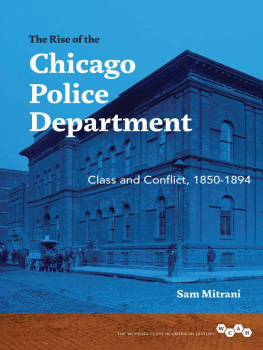
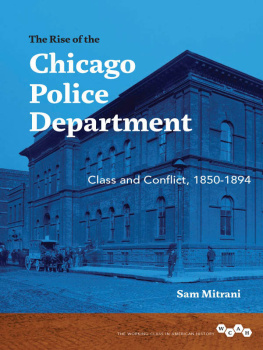

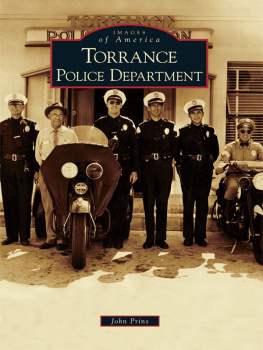
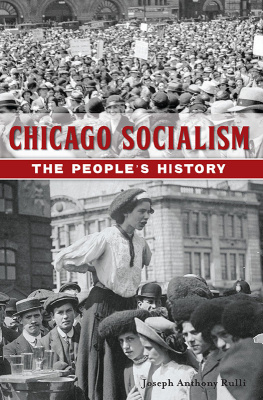
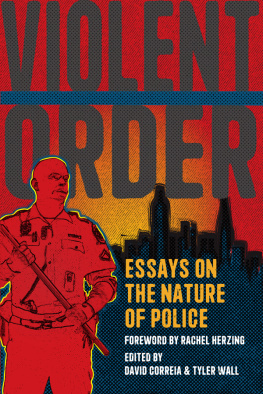
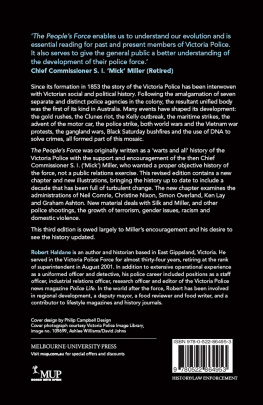
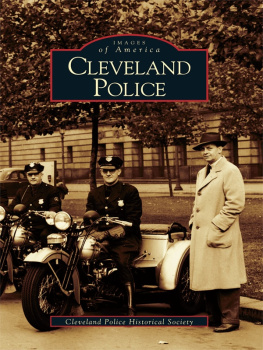
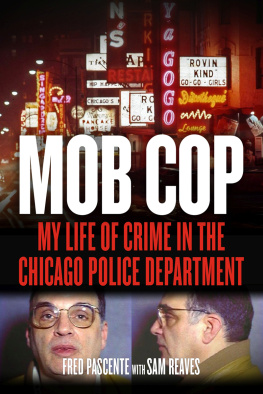


 This book is printed on acid-free paper.
This book is printed on acid-free paper.